31 Popular Health Foods That Are Actually Junk in Disguise
Ever grabbed a "healthy" snack only to feel puzzled by the nutrition label later? You're not alone. Today's grocery aisles are often a minefield of clever marketing, where foods wear a "health halo" – sporting claims like "natural" or "low-fat" while secretly packing surprising amounts of sugar, refined ingredients, or unhealthy fats. These deceptive labels can easily derail your wellness goals. That's exactly why we've expanded our investigation, digging deep into 31 popular foods that frequently aren't as wholesome as they appear. Get ready to become a savvier shopper! We’re pulling back the curtain on misleading claims and hidden truths, empowering you to finally see past the hype, make genuinely nourishing choices, and truly fuel your well-being. Let's bust some common food myths together!
1. Granola: The Sugary Trap
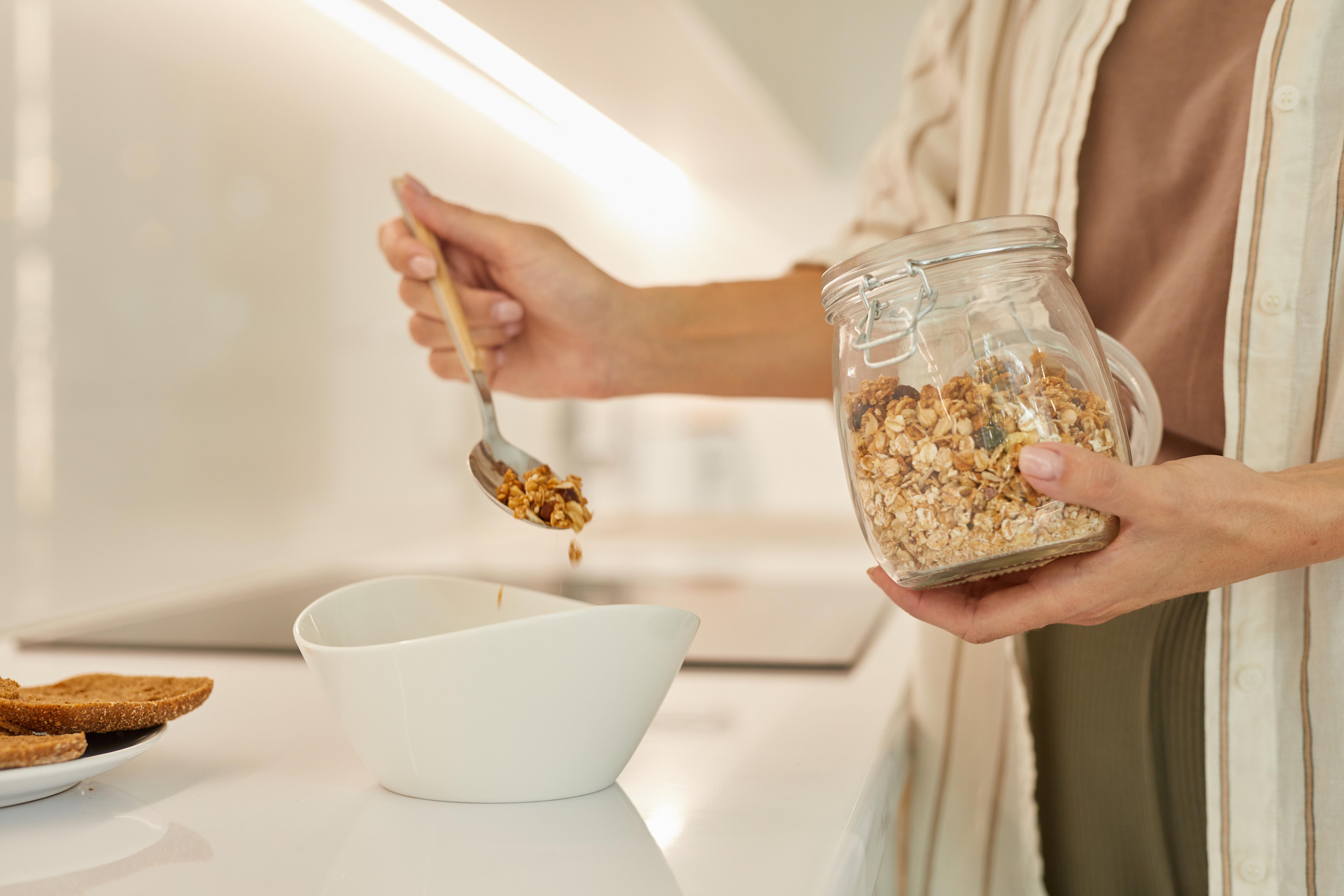
Granola is often touted as a wholesome breakfast staple, associated with images of active, health-conscious individuals. However, the reality is that many commercial granola products are laden with sugars and unhealthy fats. While oats, the primary ingredient in granola, are indeed nutritious, the addition of sweeteners like honey, maple syrup, and even chocolate chips can significantly elevate the calorie content. This sugar-laden concoction can lead to spikes in blood sugar levels, counteracting the benefits of the fiber-rich oats. Moreover, granola is often high in calories due to the inclusion of nuts and seeds, which, while healthy in moderation, can contribute to excessive caloric intake when consumed in large quantities. This is particularly concerning for those who are mindful of their weight. The perception of granola as a "light" food can lead to overconsumption, with individuals underestimating the caloric density of their servings. As a result, what begins as a seemingly healthy breakfast choice can inadvertently contribute to weight gain and other metabolic issues. To enjoy granola without falling into the sugary trap, it is advisable to opt for homemade versions where you can control the amount of sugar and fat. Alternatively, selecting brands that prioritize low sugar content and natural ingredients can help mitigate some of these concerns. Pairing granola with unsweetened yogurt or fresh fruit can also balance the meal, providing a more nutritious start to your day without the hidden sugars.
2. Smoothies: The Caloric Conundrum

Smoothies are often seen as the epitome of health in a cup, offering a convenient way to consume fruits and vegetables. However, they can easily become caloric conundrums, especially when purchased from popular smoothie bars. Many commercial smoothies contain added sugars, in the form of fruit juices or sweeteners, that significantly increase their caloric content. These additions can transform a potentially healthy snack into a sugar-laden beverage that rivals the calorie count of a full meal. The misconception that all smoothies are inherently healthy stems from the inclusion of fruits and vegetables. While these ingredients are nutritious, the blending process can strip them of their fiber content, leading to quicker digestion and less satiety. This means that even a smoothie packed with fruits and vegetables may not keep you full for long, prompting unnecessary snacking and additional calorie consumption throughout the day. To enjoy smoothies without the caloric pitfalls, it is essential to be mindful of the ingredients. Opt for whole fruits instead of fruit juices, and consider adding a source of protein, such as Greek yogurt or a scoop of protein powder, to enhance satiety. Additionally, incorporating vegetables like spinach or kale can boost the nutritional content without significantly altering the taste. By being selective with your ingredients, you can create a balanced smoothie that supports your health goals.
3. Yogurt: The Hidden Sugar Bomb
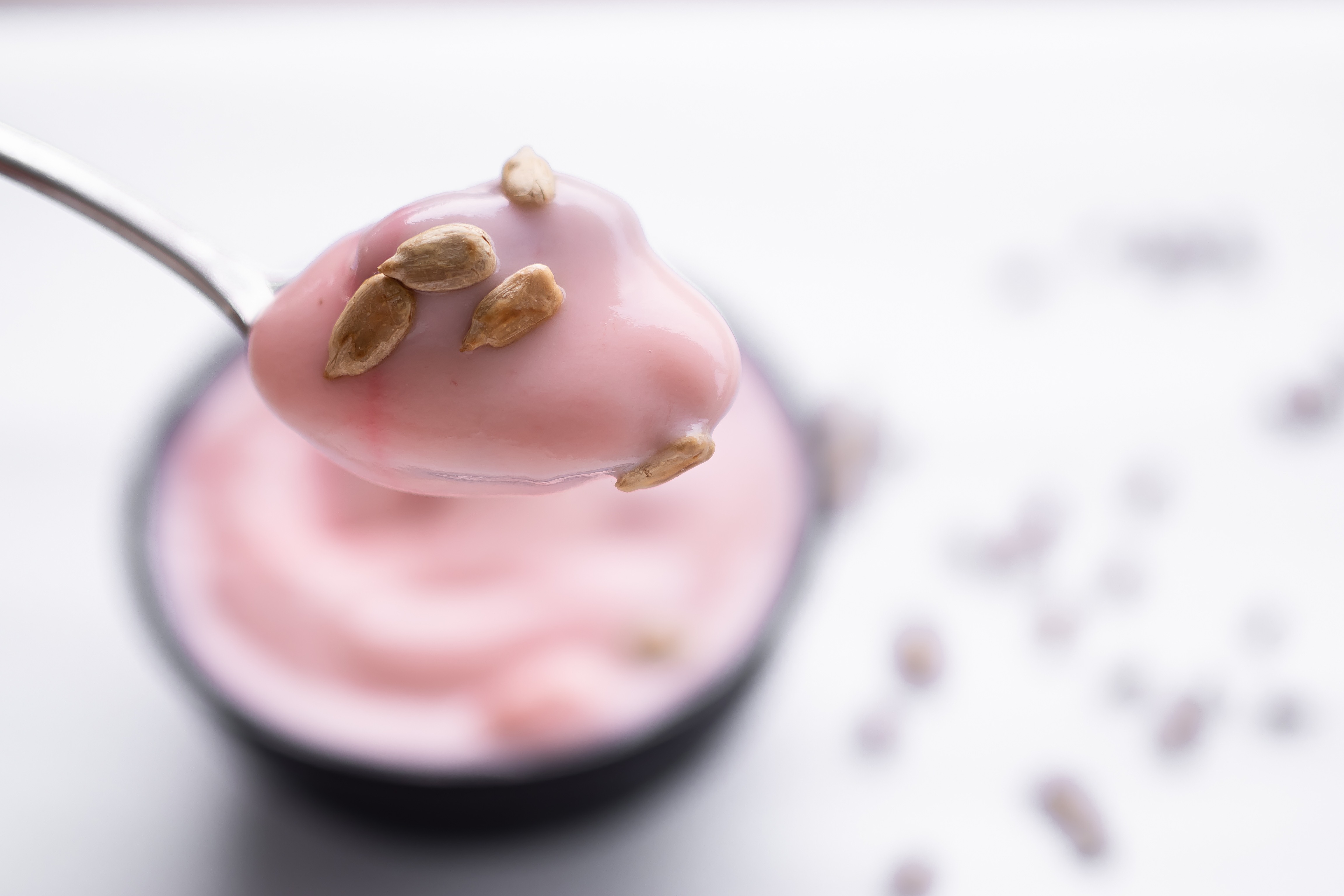
Yogurt is often hailed as a probiotic-rich food that supports gut health and digestion. However, not all yogurts are created equal, and many flavored varieties are essentially sugar bombs disguised as health foods. The addition of fruit purees, syrups, and sweeteners can turn a serving of yogurt into a dessert-like treat, with sugar content rivaling that of a candy bar. This high sugar intake can negate the potential health benefits of the probiotics, leading to weight gain and other metabolic issues. The perception of yogurt as a health food is largely due to its association with probiotics and calcium. While these components are beneficial, they are often overshadowed by the excessive sugar found in many commercial brands. The American Heart Association recommends limiting added sugars to no more than 25 grams per day for women and 36 grams for men. Many flavored yogurts contain upwards of 20 grams of sugar per serving, leaving little room for additional sugar intake throughout the day. To avoid the hidden sugar bomb, it is advisable to choose plain, unsweetened yogurt and add your own toppings, such as fresh fruit or a drizzle of honey, to control the sugar content. Greek yogurt is a particularly good option, as it is higher in protein and lower in sugar compared to regular yogurt. By making these small adjustments, you can enjoy the benefits of yogurt without the unwanted sugar overload.
4. Energy Bars: The Misleading Snack

Energy bars are marketed as convenient, nutritious snacks designed to fuel active lifestyles. However, many of these bars are little more than glorified candy bars, packed with sugars and unhealthy fats. The convenience of energy bars often comes at the expense of nutritional quality, with manufacturers prioritizing taste and shelf life over health benefits. As a result, consumers may find themselves consuming excessive calories without the intended nutritional payoff. The misconception that energy bars are inherently healthy is perpetuated by their association with fitness and athleticism. However, a closer look at the ingredient list often reveals high fructose corn syrup, artificial flavors, and preservatives. These components can contribute to inflammation, insulin resistance, and other health issues when consumed regularly. Furthermore, the high sugar content can lead to energy crashes, negating the intended purpose of providing sustained energy. To make more informed choices, it is important to scrutinize the ingredient list and nutritional information of energy bars. Look for options with minimal added sugars, a higher protein content, and natural ingredients. Alternatively, consider making homemade energy bars using whole foods like oats, nuts, and dried fruits. By taking control of your snack choices, you can enjoy the convenience of energy bars without compromising your health.
5. Agave Nectar: The Sweet Deception
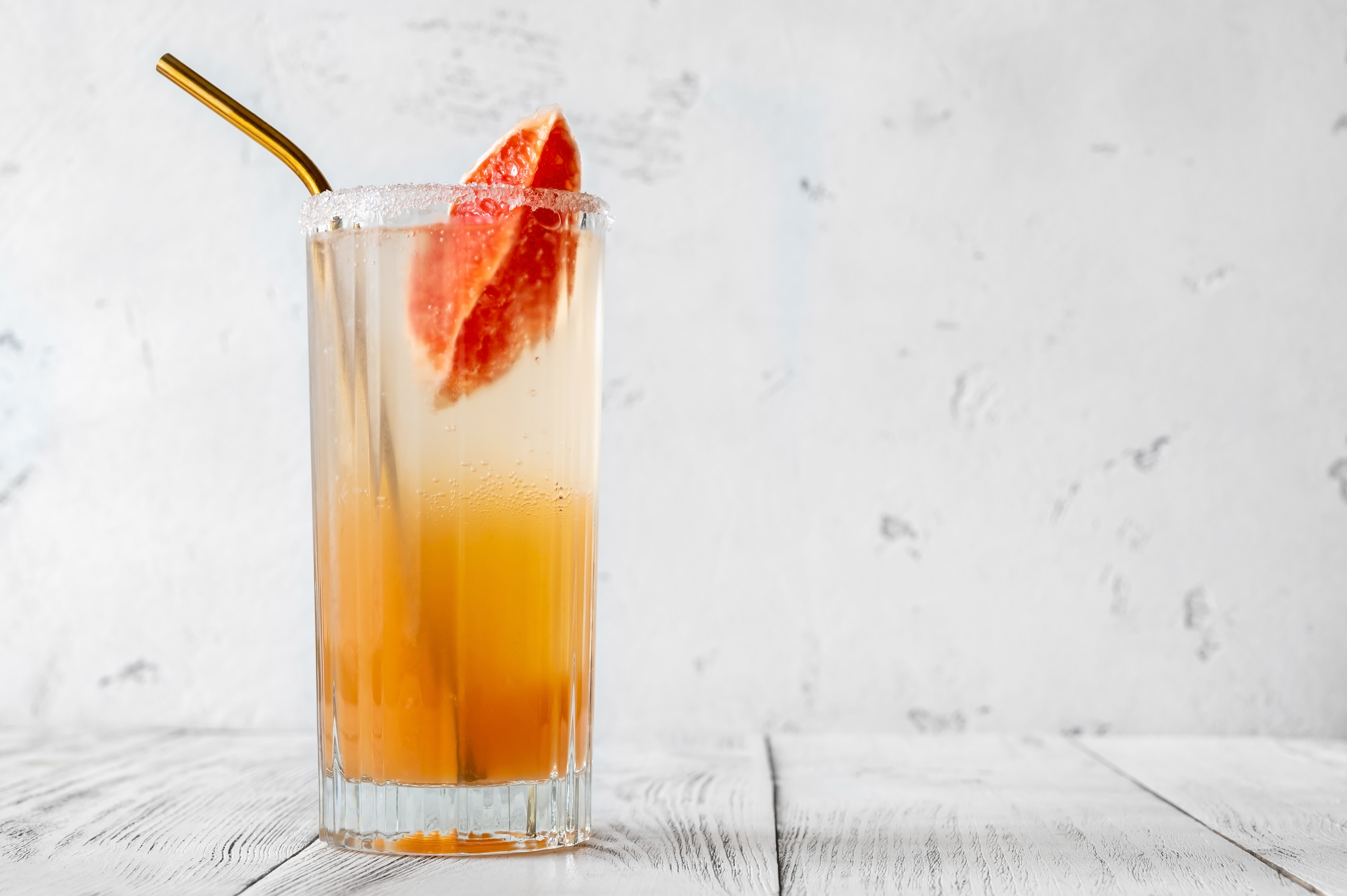
Agave nectar is often marketed as a natural, healthier alternative to sugar, appealing to those seeking to reduce their refined sugar intake. However, this sweetener is not as virtuous as it seems. Agave nectar is high in fructose, even more so than high fructose corn syrup, which can have detrimental effects on metabolic health. Excessive fructose consumption is linked to insulin resistance, fatty liver disease, and increased triglyceride levels, all of which contribute to the risk of developing chronic diseases. The perception of agave nectar as a healthy sweetener is largely due to its low glycemic index, which means it does not cause rapid spikes in blood sugar levels. While this may seem beneficial, the high fructose content can lead to long-term metabolic issues that outweigh the short-term benefits of stable blood sugar levels. Additionally, the refining process used to produce agave nectar often strips it of any potential nutrients, leaving behind a sweetener that is essentially devoid of nutritional value. To avoid the sweet deception of agave nectar, it is advisable to use natural sweeteners like honey or maple syrup in moderation, or to explore sugar alternatives like stevia or monk fruit that do not carry the same health risks. By being mindful of the sweeteners you choose, you can satisfy your sweet tooth without compromising your health.
6. Gluten-Free Products: The Misunderstood Label

The rise of gluten-free diets has led to a proliferation of gluten-free products that are often perceived as healthier alternatives to their gluten-containing counterparts. However, many gluten-free products are highly processed and can be devoid of essential nutrients. The removal of gluten often necessitates the addition of other ingredients, such as refined starches and sugars, to mimic the texture and taste of traditional products. This can result in a product that is higher in calories and lower in fiber and protein. The misconception that gluten-free products are inherently healthier stems from the association of gluten with digestive issues and autoimmune conditions like celiac disease. While a gluten-free diet is essential for those with celiac disease or gluten sensitivity, it is not necessarily beneficial for the general population. In fact, some studies suggest that a gluten-free diet may lead to deficiencies in essential nutrients like fiber, iron, and B vitamins. To navigate the world of gluten-free products, it is important to read labels carefully and prioritize whole, unprocessed foods. Opting for naturally gluten-free grains like quinoa, brown rice, and millet can provide the nutritional benefits that many processed gluten-free products lack. By focusing on a balanced diet rather than simply eliminating gluten, you can support your health without falling prey to the misconceptions surrounding gluten-free products.
7. Veggie Chips: The Colorful Illusion
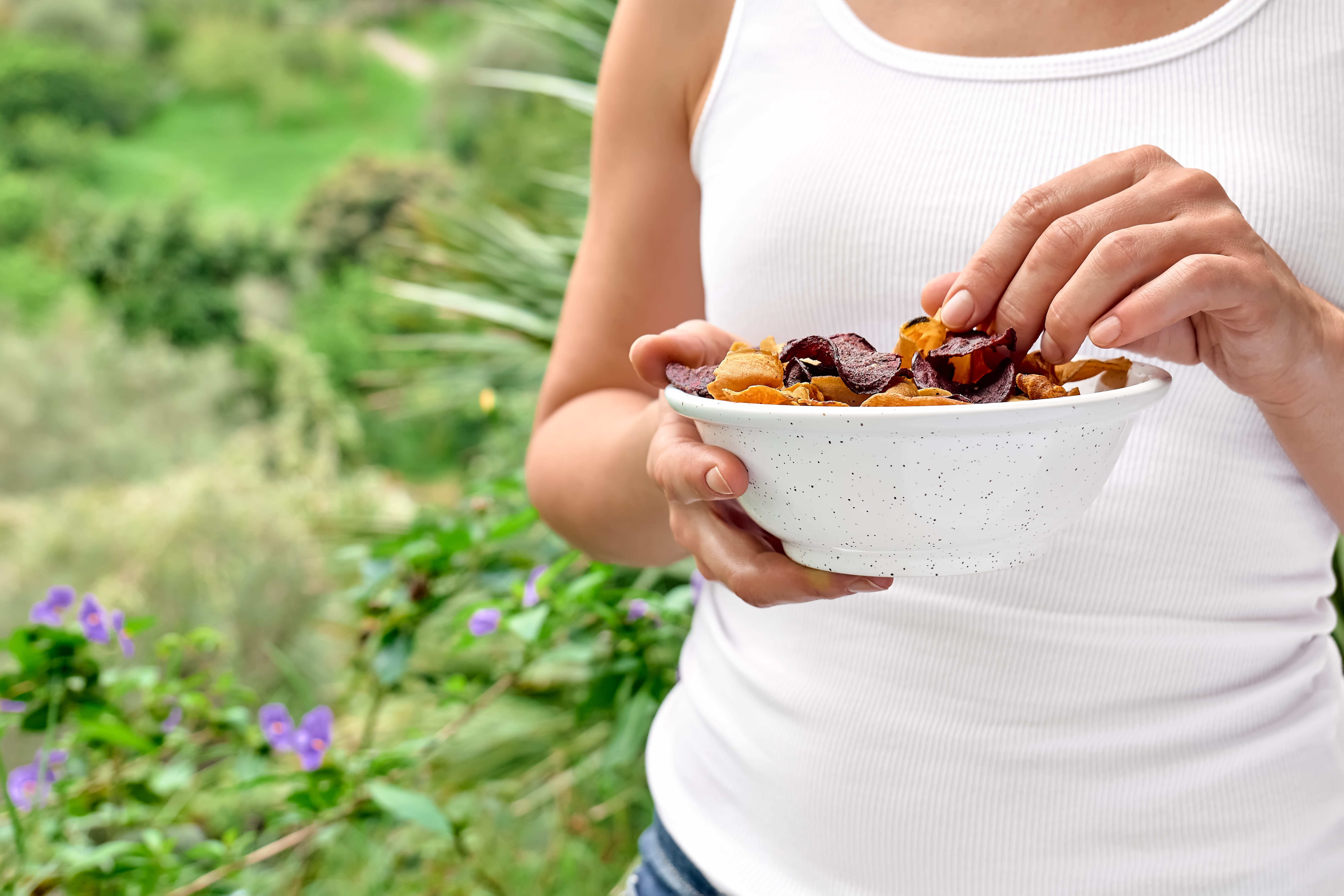
Veggie chips are often seen as a healthier alternative to traditional potato chips, offering the promise of vegetable goodness in a convenient snack form. However, many veggie chips are not much different from their potato counterparts, as they are often fried and heavily salted. The vibrant colors of veggie chips can be deceiving, as they are often derived from vegetable powders or extracts rather than whole vegetables. This means that the nutritional benefits of the original vegetables are largely lost in the processing. The perception of veggie chips as a healthy snack is largely due to clever marketing that emphasizes their vegetable content. However, a closer look at the ingredient list often reveals a product that is high in calories, unhealthy fats, and sodium. The frying process used to create the crispy texture can also lead to the formation of harmful compounds like acrylamide, which is associated with an increased risk of cancer. To enjoy the benefits of vegetables without falling for the colorful illusion of veggie chips, it is advisable to opt for whole, fresh vegetables or to make your own veggie chips at home. Baking thinly sliced vegetables like kale, sweet potatoes, or zucchini with a drizzle of olive oil and a sprinkle of sea salt can provide a nutritious and satisfying snack without the unhealthy additives.
8. Low-Fat Foods: The Fat-Free Fallacy

The low-fat craze of the past few decades has led to the proliferation of low-fat products that are often perceived as healthier options. However, the removal of fat from these products often necessitates the addition of sugars and artificial flavors to maintain taste and texture. This can result in a product that is higher in sugar and calories than its full-fat counterpart, negating the intended health benefits of reducing fat intake. The misconception that low-fat foods are inherently healthier stems from the outdated belief that dietary fat is the primary cause of weight gain and heart disease. However, recent research has shown that not all fats are created equal, and that healthy fats, such as those found in avocados, nuts, and olive oil, can be beneficial for heart health and weight management. In contrast, the excessive sugar content of many low-fat products can contribute to weight gain, insulin resistance, and other metabolic issues. To avoid the fat-free fallacy, it is important to focus on the quality of the fats you consume rather than simply reducing fat intake. Opting for whole, minimally processed foods that contain healthy fats can provide the nutritional benefits that many low-fat products lack. By prioritizing a balanced diet that includes a variety of nutrient-dense foods, you can support your health without falling for the misconceptions surrounding low-fat products.
9. Fruit Juices: The Liquid Sugar Bomb

Fruit juices are often perceived as a healthy beverage choice, offering the promise of vitamins and antioxidants in a refreshing form. However, many commercial fruit juices are little more than liquid sugar bombs, with sugar content comparable to that of soda. The juicing process strips fruits of their fiber content, leaving behind a concentrated source of sugar that can lead to rapid spikes in blood sugar levels. The misconception that fruit juices are inherently healthy stems from their association with whole fruits, which are indeed nutritious. However, the lack of fiber in fruit juices means that they are digested quickly, leading to less satiety and increased calorie consumption. This can contribute to weight gain and other metabolic issues when consumed regularly. To enjoy the benefits of fruits without the liquid sugar bomb of fruit juices, it is advisable to opt for whole fruits or to make your own juice at home using a blender rather than a juicer. This allows you to retain the fiber content of the fruits, providing a more balanced and satisfying beverage. By being mindful of your beverage choices, you can support your health without falling for the misconceptions surrounding fruit juices.
10. Brown Bread: The Whole Grain Illusion

Brown bread is often perceived as a healthier alternative to white bread, offering the promise of whole grains and fiber in a convenient form. However, many commercial brown breads are not much different from white bread, as they are often made with refined flour and colored with caramel or molasses to give the appearance of whole grains. This means that the nutritional benefits of whole grains are largely lost in the processing. The misconception that brown bread is inherently healthier stems from the association of whole grains with heart health and weight management. While whole grains are indeed beneficial, the refined flour used in many brown breads can lead to rapid spikes in blood sugar levels, negating the intended health benefits. Additionally, the lack of fiber in refined flour means that brown bread may not provide the satiety and nutritional benefits of true whole grain products. To enjoy the benefits of whole grains without falling for the whole grain illusion of brown bread, it is important to read labels carefully and look for products that list whole grains as the first ingredient. Opting for breads that are made with 100% whole grains can provide the nutritional benefits that many commercial brown breads lack. By prioritizing whole, minimally processed foods, you can support your health without falling for the misconceptions surrounding brown bread.
11. Diet Sodas: The Artificial Sweetener Dilemma

Diet sodas are often marketed as a healthier alternative to regular sodas, offering the promise of zero calories and no sugar. However, the artificial sweeteners used in diet sodas can have unintended health consequences. Some studies suggest that artificial sweeteners may disrupt the gut microbiome, leading to insulin resistance and other metabolic issues. Additionally, the intense sweetness of artificial sweeteners can alter taste preferences, leading to increased cravings for sugary foods. The misconception that diet sodas are inherently healthier stems from their lack of calories and sugar. However, the long-term effects of artificial sweeteners on health are not fully understood, and some research suggests that they may contribute to weight gain and other health issues. Additionally, the consumption of diet sodas may lead to a false sense of security, prompting individuals to consume more calories from other sources. To avoid the artificial sweetener dilemma, it is advisable to limit the consumption of diet sodas and to opt for healthier beverage choices, such as water, herbal tea, or infused water with fresh fruits and herbs. By being mindful of your beverage choices, you can support your health without falling for the misconceptions surrounding diet sodas.
12. Sports Drinks: Hydration Hype?

Designed for elite athletes undergoing intense, prolonged exertion, sports drinks are often consumed casually. While they replenish electrolytes, most are loaded with sugar (often high-fructose corn syrup) and artificial colors, rivaling soda in sugar content. For average workouts or daily hydration, water is far superior and sufficient. Unless you're engaging in very strenuous activity for over an hour, these drinks often provide unnecessary calories and sugar, potentially hindering weight management and metabolic health.
13. Commercial Trail Mix: Not Always a Healthy Path

Trail mix seems like the perfect blend of healthy fats, fiber, and energy from nuts, seeds, and dried fruit. However, many store-bought versions load up on sugary extras like chocolate candies, yogurt-covered raisins (more sugar!), sweetened dried cranberries, and heavily salted nuts or seeds. This transforms a potentially nutritious snack into a high-calorie, high-sugar, high-sodium indulgence. Always check the ingredients or, better yet, create your own mix to control the components and portions.
14. Pretzels: The Refined Carb Trap

Often chosen as a "healthier," low-fat alternative to potato chips, pretzels typically offer little nutritional value. Most are made from refined white flour, stripping away beneficial fiber and nutrients. This means they can cause rapid blood sugar spikes and crashes. Furthermore, they are often heavily salted, contributing significantly to daily sodium intake. While seemingly light, their lack of protein and fiber means they aren't very satiating, making it easy to overconsume them without feeling full.
15. Rice Cakes: Light on Calories, Light on Nutrition
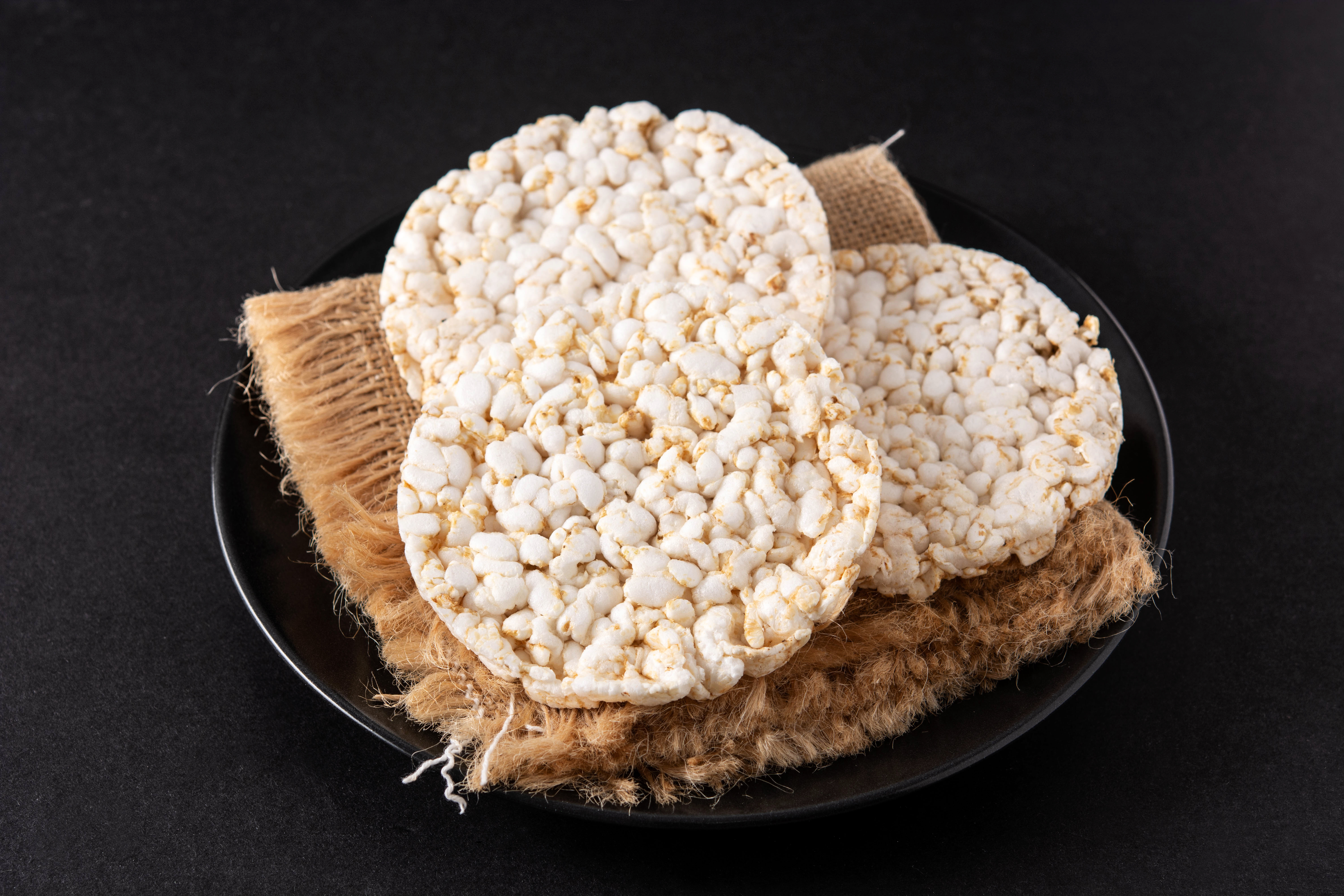
Marketed as a diet-friendly, low-calorie snack, plain rice cakes are essentially puffed refined rice. They offer minimal fiber, protein, vitamins, or minerals, providing little nutritional substance. Their high glycemic index means they can spike blood sugar quickly, especially when eaten alone. Flavored varieties often compound the issue by adding significant amounts of sodium, sugar, or artificial flavorings. While low in calories, their lack of satiety often leads to needing more food shortly after.
16. Reduced-Fat Peanut Butter: Trading Fat for Sugar
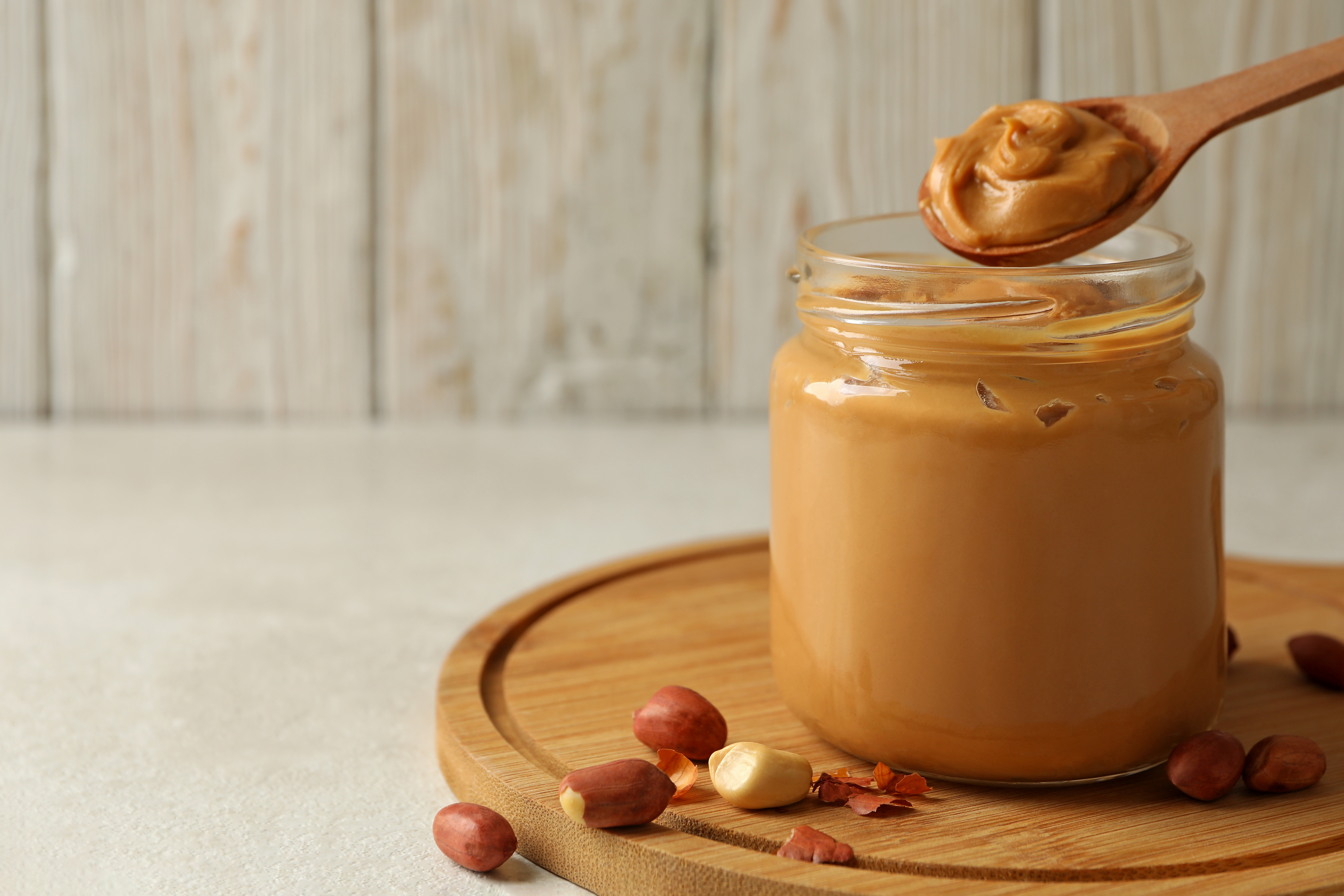
In the quest to reduce fat, manufacturers of reduced-fat peanut butter often remove healthy monounsaturated fats and compensate by adding sugar, corn syrup solids, and various fillers to maintain taste and texture. This can result in a product that's less satiating and potentially worse for metabolic health than its full-fat counterpart. Natural peanut butter (just peanuts and maybe salt) provides healthy fats and protein. Always compare labels – the full-fat version is often the healthier choice in moderation.
17. Bottled Iced Teas (Sweetened): Liquid Sugar Overload

Tea, especially green or black, is packed with beneficial antioxidants. However, many popular bottled iced teas are essentially tea-flavored sugar water. A single bottle can contain a staggering amount of added sugar, sometimes exceeding the daily recommended limit in one go. This negates any potential health benefits from the tea itself. Always check the nutrition label for added sugars, or better yet, brew your own tea at home and enjoy it unsweetened or with a minimal amount of natural sweetener.
18. Flavored Plant-Based Milks: Sweetened Substitutes

Plant-based milks (almond, oat, soy, rice) can be great dairy alternatives, but flavored versions – like vanilla, chocolate, or even some "original" varieties – often contain significant amounts of added sugar to enhance taste. This can turn a seemingly healthy swap into a sugary beverage, similar to flavored cow's milk or even soda. Always reach for the "unsweetened" versions of plant-based milks to get the benefits without the unnecessary sugar load, checking the nutrition facts panel carefully.
19. Dried Fruit: Nature's Candy Concentrated
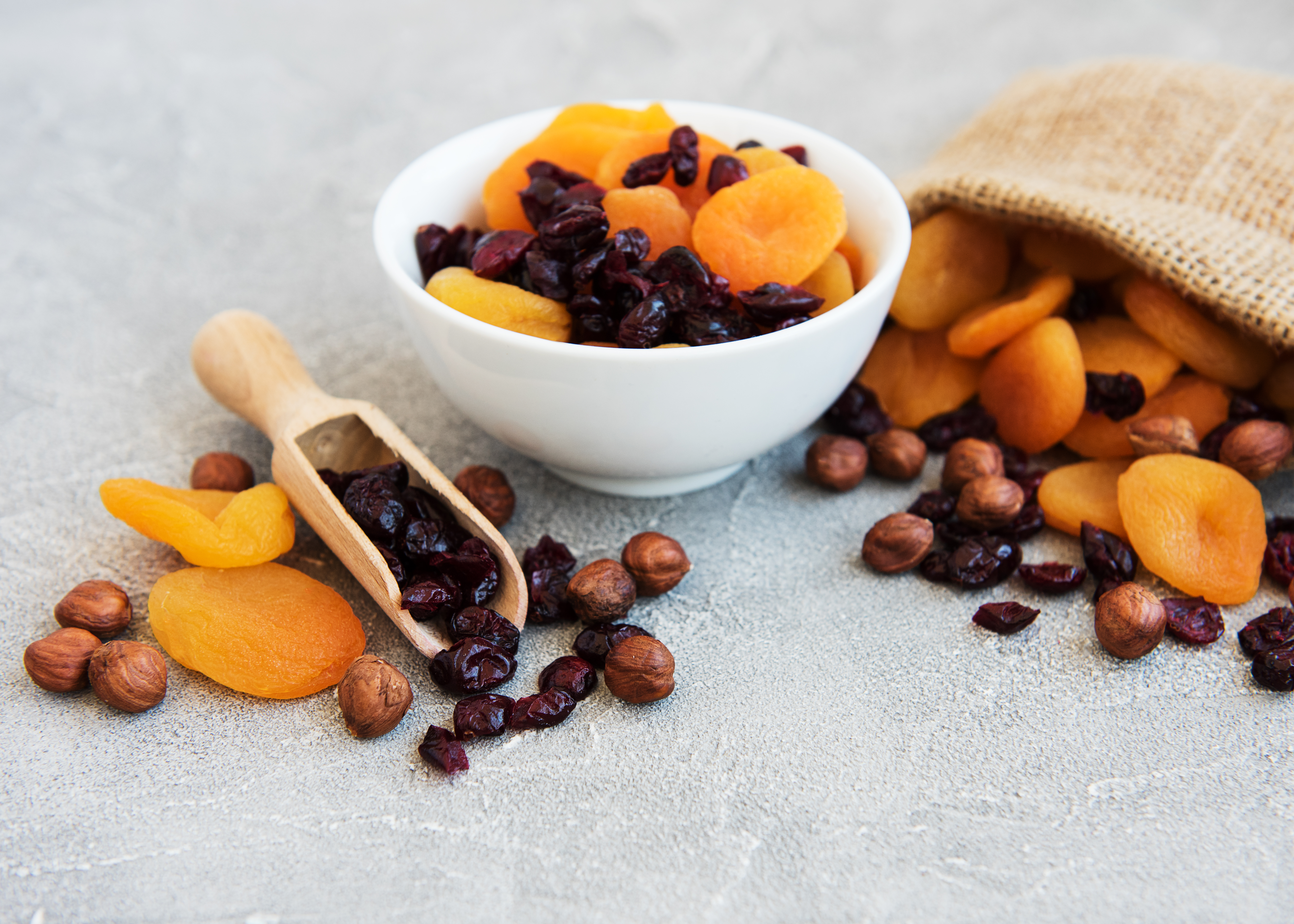
While dried fruit retains some fiber and nutrients from its fresh form, the drying process removes water and concentrates the natural sugars dramatically. This makes it incredibly easy to consume large amounts of sugar and calories in a small portion size compared to eating fresh fruit (which is more filling due to water content). Many brands also add extra sugar or sulfites for preservation. Enjoy dried fruit sparingly, treat it like candy, and check labels for added sugars.
20. Commercial Muffins: Cake in Disguise

Often grabbed as a quick breakfast or snack, muffins can seem healthier than donuts or pastries. However, large, bakery-style or coffee-shop muffins are frequently loaded with refined flour, sugar, unhealthy fats (like soybean or canola oil), and surprisingly high calorie counts – often exceeding 400-500 calories. They lack significant protein or fiber, essentially making them individual cakes. Opt for smaller, whole-grain homemade muffins where you control the ingredients, or choose a more balanced breakfast option.
21. Sushi Rolls (with Tempura/Creamy Sauces): Hidden Calories & Fat

Sushi can be incredibly healthy, focusing on fresh fish and vegetables. However, popular "Westernized" rolls featuring tempura (deep-fried ingredients), cream cheese, or drizzled with mayonnaise-based spicy or sweet eel sauces dramatically increase the calorie, unhealthy fat, and refined carbohydrate content. A single elaborate roll can pack more calories and fat than expected. Stick to simpler rolls featuring fresh fish, avocado, and vegetables, and request sauces on the side to control intake.
22. Coconut Oil: The Saturated Fat Story

Hailed widely as a miracle food, coconut oil gained immense popularity for its potential MCT (medium-chain triglyceride) benefits. However, it's crucial to remember that coconut oil is extremely high in saturated fat – even more so than butter. While some research on MCTs is intriguing, excessive saturated fat intake is still linked by major health organizations to increased LDL (bad) cholesterol. Using it sparingly might be fine, but relying on it as a primary health fat over options like olive or avocado oil could be counterproductive for heart health.
23. Protein Bars (Highly Processed): More Than Just Protein?

Capitalizing on the demand for protein, many bars promise muscle support and satiety. While some are well-formulated, a vast number are essentially candy bars with added protein isolate. They often contain high amounts of sugar (or sugar alcohols which cause digestive upset for some), unhealthy fats, artificial sweeteners, and a lengthy list of processed ingredients. Always check the full nutrition panel and ingredient list; a truly healthy bar should have minimal added sugar and recognizable whole-food ingredients.
24. "Baked" Potato Chips & Snacks: Better Than Fried? Maybe Not.
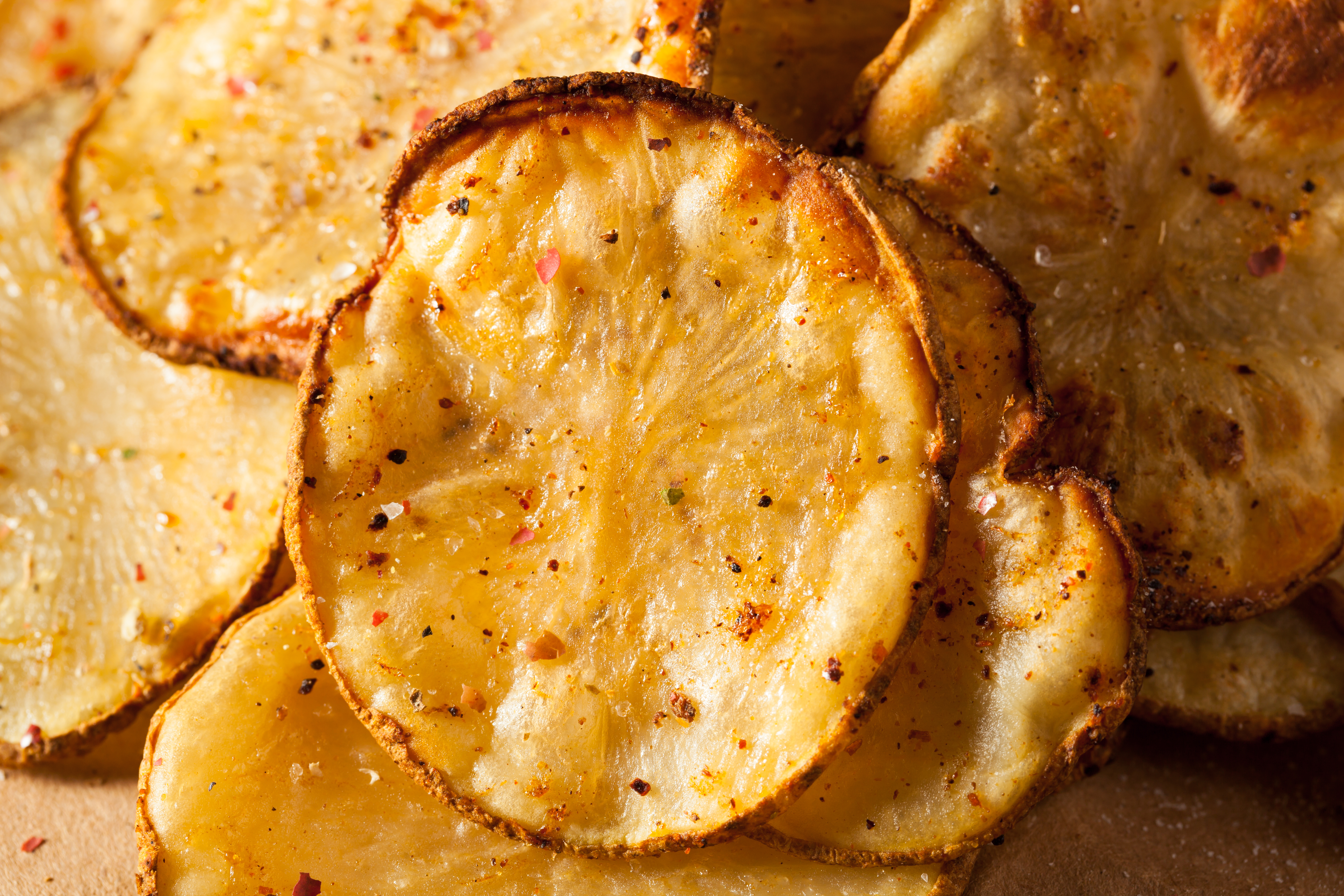
Choosing "baked" over "fried" sounds like an obvious health win, reducing fat content. However, baked chips and snacks are often still made from refined potato or corn flour, heavily salted, and may contain added sugars or artificial flavorings to compensate for taste. They generally lack fiber and substantial nutrients. While lower in fat than their fried counterparts, they remain highly processed snacks that can impact blood sugar and don't offer much nutritional value compared to whole foods.
25. Commercial Salad Dressings (Especially "Light"): Flavor at a Cost
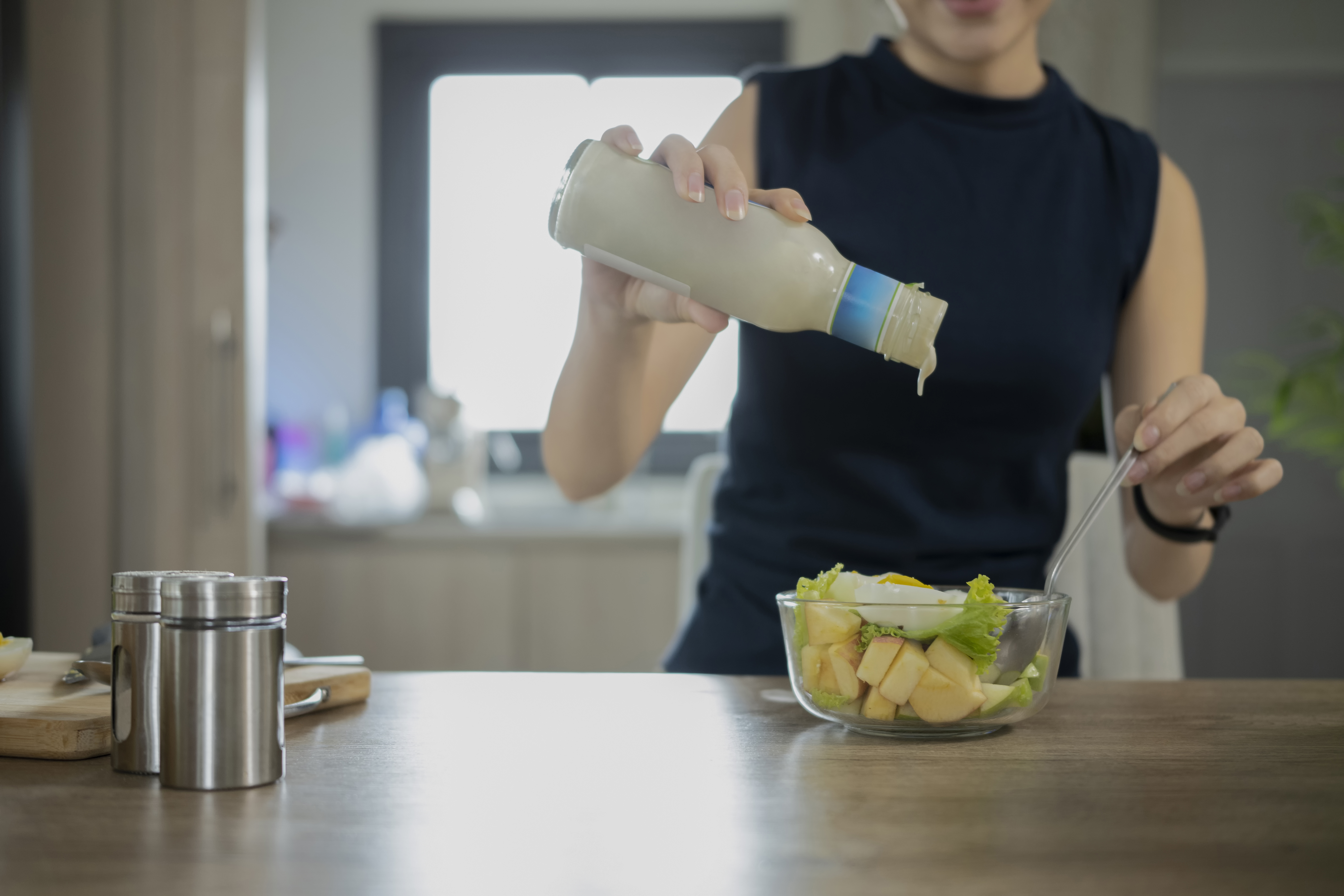
Salads are healthy, but the dressing can quickly sabotage your efforts. Many bottled dressings, particularly creamy ones or vinaigrettes, are loaded with hidden sugars, high amounts of sodium, unhealthy oils (like soybean or canola), and artificial ingredients. Ironically, "light" or "fat-free" versions often compensate by adding even more sugar or sodium to make up for the lack of fat. Making your own simple dressing with olive oil, vinegar, and herbs is almost always a healthier, more transparent choice.
26. Flavored Instant Oatmeal: Quick Sugar Rush
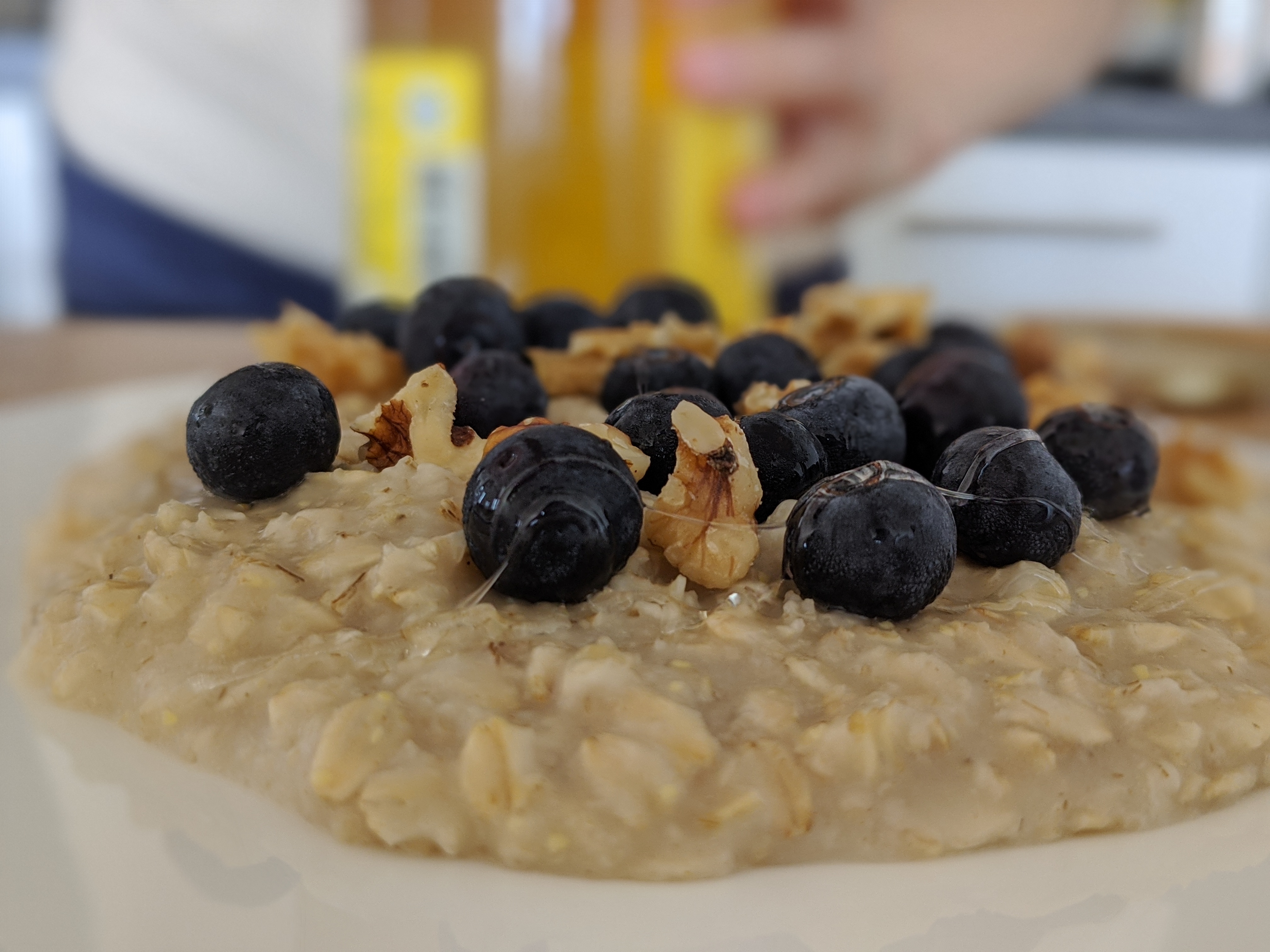
Plain rolled oats are a fantastic source of fiber and complex carbs. However, those convenient single-serving flavored instant oatmeal packets are frequently packed with added sugar (sometimes multiple types), artificial flavors, and sodium. What starts as a potentially healthy breakfast becomes more akin to a sugary cereal, leading to a blood sugar spike and subsequent crash. Stick to plain oats (quick-cooking is fine) and add your own fruit, nuts, or a small amount of natural sweetener for control.
27. Vitamin-Enhanced Waters: Just Sugary Water?

Marketed as a step up from plain water, these colorful beverages often promise added vitamins and antioxidants. Unfortunately, many contain significant amounts of added sugar (sucrose, fructose) or artificial sweeteners. The small amounts of vitamins added are typically ones readily available in a balanced diet, making the "enhancement" negligible for most people. You're often better off drinking plain water and getting your nutrients from whole foods, avoiding the unnecessary sugar or artificial additives.
28. Processed Plant-Based Meat Alternatives: Not Always Healthier

While reducing meat intake can be beneficial, not all plant-based alternatives are created equal. Many popular faux burgers, sausages, or nuggets are ultra-processed products high in sodium, refined oils, binders, and artificial ingredients designed to mimic meat's texture and flavor. While they can be useful transition foods, relying heavily on them might not be healthier than choosing lean, unprocessed protein sources like beans, lentils, tofu, tempeh, or lean poultry/fish if you eat them.
29. Kombucha (High Sugar Brands): Fermented Fizz Facts

Kombucha is praised for its potential probiotic content beneficial for gut health. However, the fermentation process requires sugar, and many commercial brands add substantial extra sugar post-fermentation to improve taste, sometimes reaching levels comparable to sugary sodas. This high sugar content can counteract the potential gut health benefits and contribute significantly to daily sugar intake. Always check the label for added sugar content; aim for brands with under 5-8 grams per serving.
30. Commercial Acai Bowls: The Superfruit Sugar Trap

Acai berries themselves are nutrient-dense antioxidants. However, trendy acai bowls purchased from cafes or shops often become calorie and sugar bombs. The base is frequently blended with sugary fruit juices or sweetened plant milks, and then piled high with toppings like granola (often sugary), sweetened coconut flakes, honey, or agave nectar. A seemingly healthy bowl can easily exceed 50 grams of sugar. Making your own at home with unsweetened bases and controlled toppings is far healthier.
31. Yogurt & Granola Parfaits (Pre-Made): Layered with Sugar

These convenient grab-and-go options look wholesome with layers of yogurt, fruit, and granola. Unfortunately, store-bought or cafe versions typically use sweetened yogurt (often vanilla-flavored), sugary granola (as discussed earlier), and sometimes syrupy fruit compote instead of fresh fruit. This combination results in a high-sugar, high-calorie treat that's more like dessert than a healthy breakfast or snack. Assembling your own with plain yogurt, fresh fruit, and controlled granola portions is a much better choice.
Navigating the Health Food Landscape

Navigating the health food landscape requires a critical eye and a willingness to question the narratives that have been constructed around certain foods. By prioritizing whole, minimally processed foods and being mindful of ingredient lists and nutritional information, individuals can make choices that truly support their health goals. It is important to remember that the concept of "healthy" is not one-size-fits-all, and that individual dietary needs and preferences should guide food choices. As we conclude this exploration, we encourage readers to approach the world of health foods with curiosity and skepticism. That way, we can navigate the complex landscape of health foods with confidence and make choices that truly support our well-being.